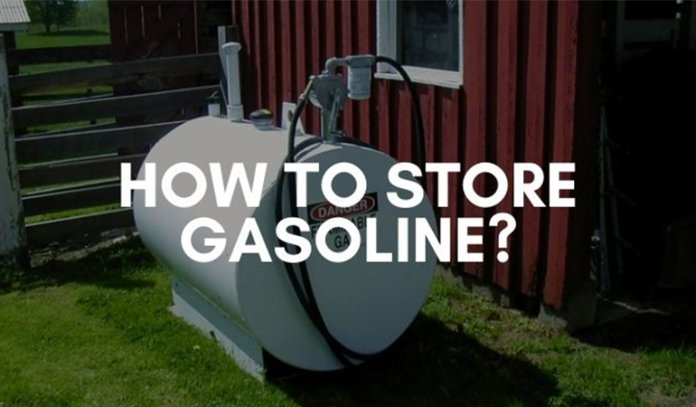Whether you are storing gasoline for emergencies, for your generator, vehicle, and lawnmower, or for other gas-powered tools and equipment, it is essential to store the gasoline properly and safely.
Gasoline is flammable and can cause skin irritations, so make sure that you store it with care and by adhering to the safety requirements.
Precautions to take when working with gasoline:
- Never smoke or light a match or lighter near open or spilled gasoline tanks
- If you accidentally get gasoline on your skin, wash the affected area thoroughly with soap and water until you remove it, and avoid lighting matches
- Remove any spilled gasoline from your vehicle or other gas-powered equipment with a paper towel or rag
- Do not use gasoline for lamps, heaters, and other appliances and equipment which work with kerosene
- Do not mix kerosene and gasoline
How to store gasoline
Remember to check with any federal, state, or local regulations and Fire Rescue Codes to find out what the maximum recommended or allowed storage amount of gasoline is. Usually, the recommended amount of gasoline that can be stored by homeowners is limited to 5 gallons.
Once you determine the legal requirements, you should proceed to pick a suitable and safe container.
Always opt for an approved gasoline storage container, which has a label or other marking showing that it is made and tested for compliance with all safety and quality standards for the storage of petroleum products.
When you are pouring the gasoline in, make sure you wipe any spills, wash your hands or other affected areas, and do not smoke.
Secure the container by making sure that it is adequately sealed.
Keep the gasoline outside of your home and at least 50 feet away from any ignition source. Keep in mind that the gas can travel near the floor and reach a nearby ignition source like a furnace, a heater, or other.
Make sure that the container is not stored in direct sunlight and is placed on some plywood if the floor is made of concrete.
Add stabilizers to the gasoline before storage to prevent microbial and compound growth and preserve the gasoline for longer.


